Granite’s innate durability, slip-resistance, and palette of earthy tones make it one of the most versatile hardscape materials on the market. From rough-textured flamed slabs that safeguard wet pool decks to reclaimed European setts that whisper Old-World romance underfoot , a well-planned granite walkway can solve drainage problems, anchor garden design, and boost curb appeal for decades with only minimal upkeep. The twenty ideas below explore finishes, layouts, edging tricks, and site-specific tweaks so you can match a granite walkway to any aesthetic—minimalist, woodland, historic, or coastal—while squeezing extra function out of every square foot of path.
1. Flamed Granite Walkway for a Modern Entry
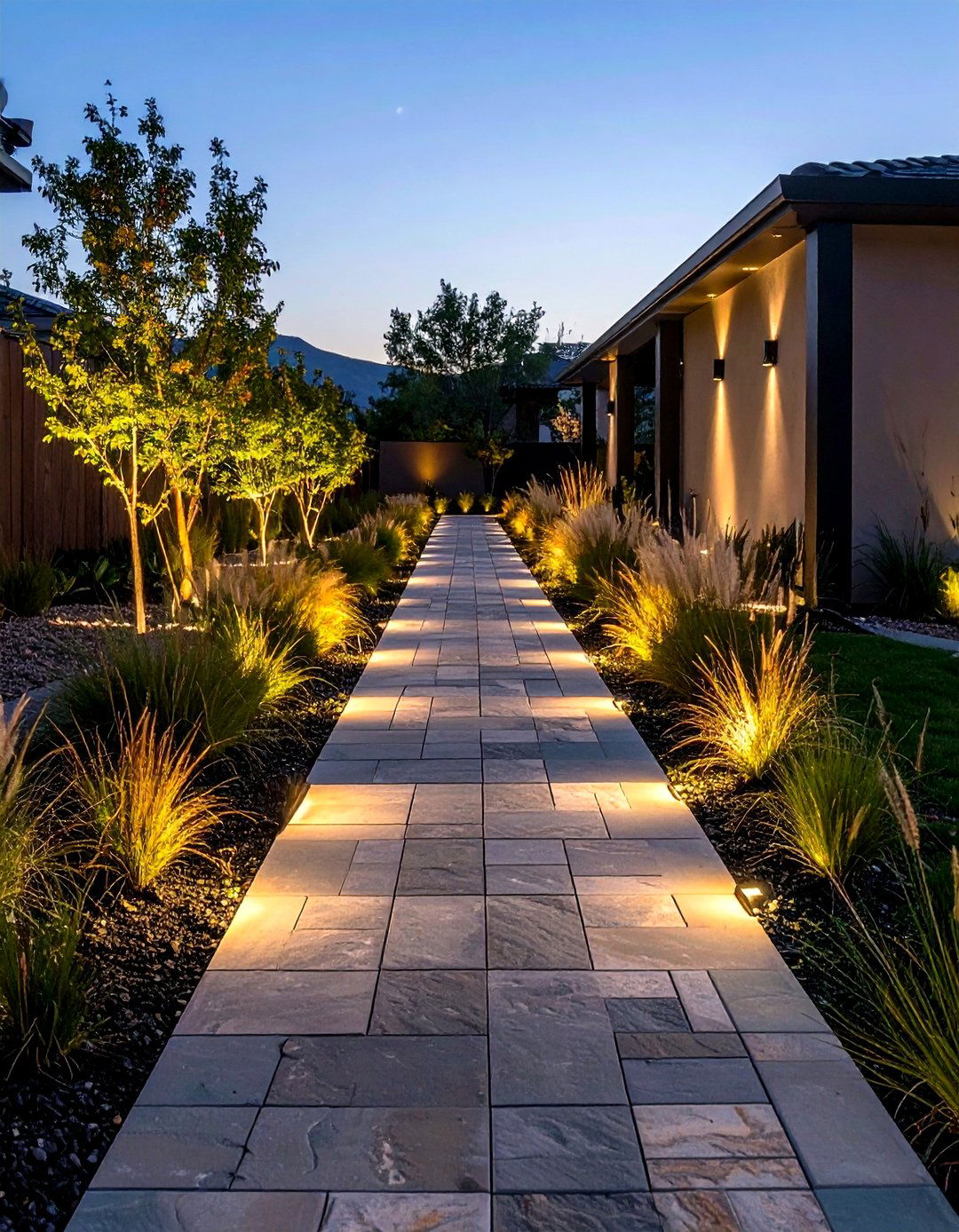
A crisp band of flamed granite pavers instantly elevates a contemporary façade while keeping guests safe on rainy days. The torch-treated finish roughens the surface, delivering high slip-resistance that designers rate ideal for exterior walkways and pool decks. Choose mid-gray slabs in a running-bond pattern to echo steel or concrete accents, or go jet-black for dramatic contrast against white siding. Extend the granite walkway to the driveway so materials tie together, and light each edge with low-profile LED strips recessed flush into the stone. Annual sealing maintains the subtle sheen without polishing away that essential texture. Finish by lining the path with drought-tolerant grasses that soften the geometry.
2. Woodland Stepping-Stone Granite Walkway

Take the organic route by scattering oversized, irregular granite stepping stones through dappled shade. Split-face pieces from a local quarry supply plenty of visual interest, and their hefty weight means each stone sits solidly once tamped into a bed of sand. StonesDirect lists multiple granite step collections thick enough to resist frost heave yet slim enough for DIY placement. Meander the granite walkway to slow visitors, leaving three-inch gaps for mosses or creeping thyme. Because the stones read as natural outcrops, you can prune less and let woodland perennials romp right to the edges—just rinse them when autumn leaf fall turns paths slippery.
3. Permeable Decomposed Granite Walkway Ribbon
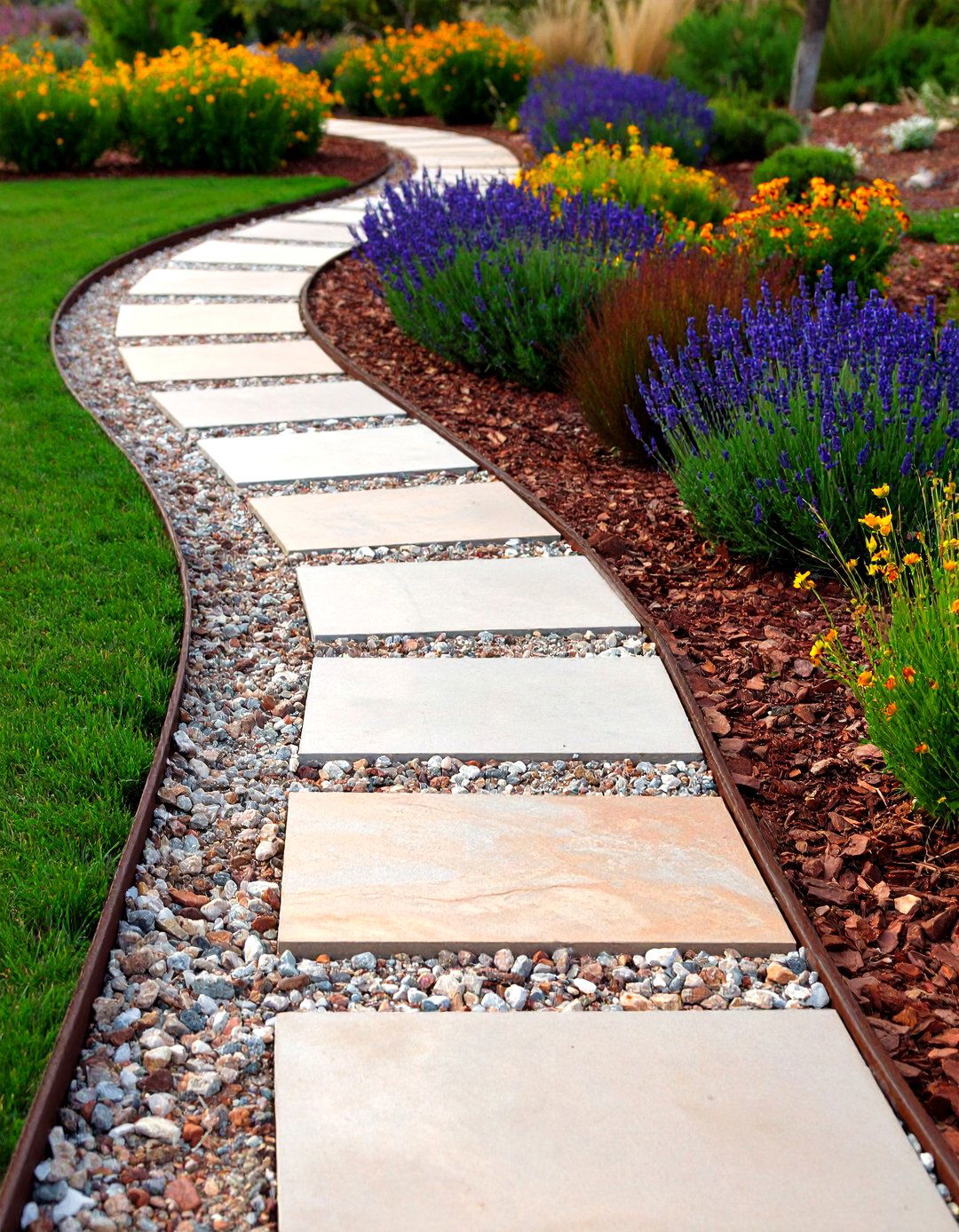
Unlike rigid paving, a decomposed-granite (DG) ribbon breathes with the landscape, letting stormwater percolate instead of pooling. Finely crushed granite interlocks under compaction yet stays porous, cutting runoff and recharging groundwater. Frame the DG strip with rusted steel edging for crisp definition and rake it seasonally to smooth divots. Add a stabilizing binder where foot traffic is heavy; the path will still feel natural underfoot but shrug off muddy spring thaws. A DG granite walkway pairs beautifully with native meadow plantings, and its muted palette makes bright blooms pop without fighting for attention.
4. Granite Sett Walkway with Old-World Charm
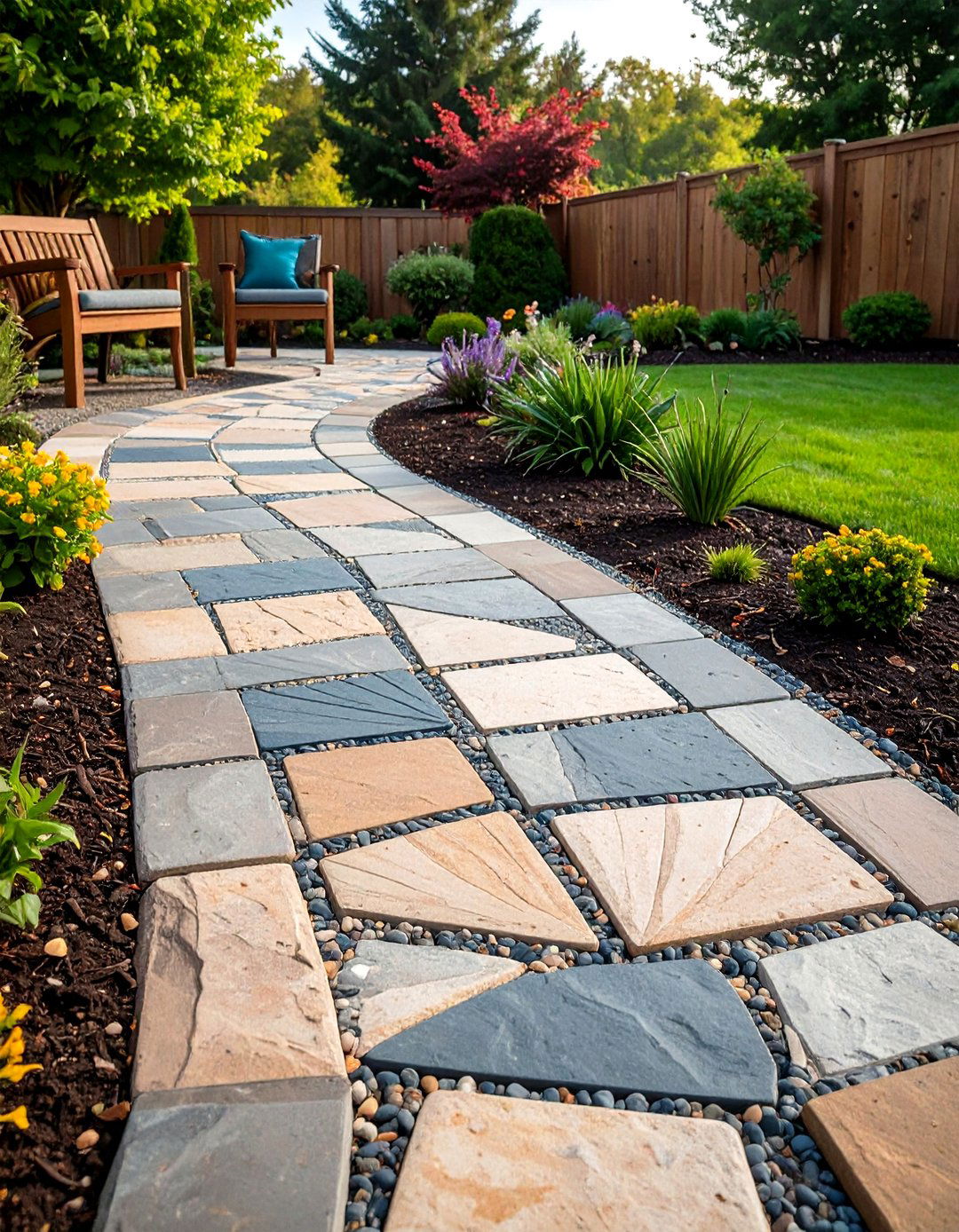
A lattice of hand-hewn granite setts—often called Belgian blocks—turns any drive or courtyard into a European streetscape. Because setts are quarried to rough rectangles, they lock tightly and offer exceptional grip on hillsides, a trait horse-drawn carriages once relied on. Lay your granite walkway on a compacted gravel base, then sweep fine granite screenings between joints for excellent drainage. Mix sizes to create fan or concentric circle motifs that echo historic plazas, or keep to a classic running bond for quicker installation. Over decades the tops will polish suavely under shoes and tires while the joints stay permeable—a timeless marriage of beauty and engineering.
5. Reclaimed Granite Cobblestone Walkway
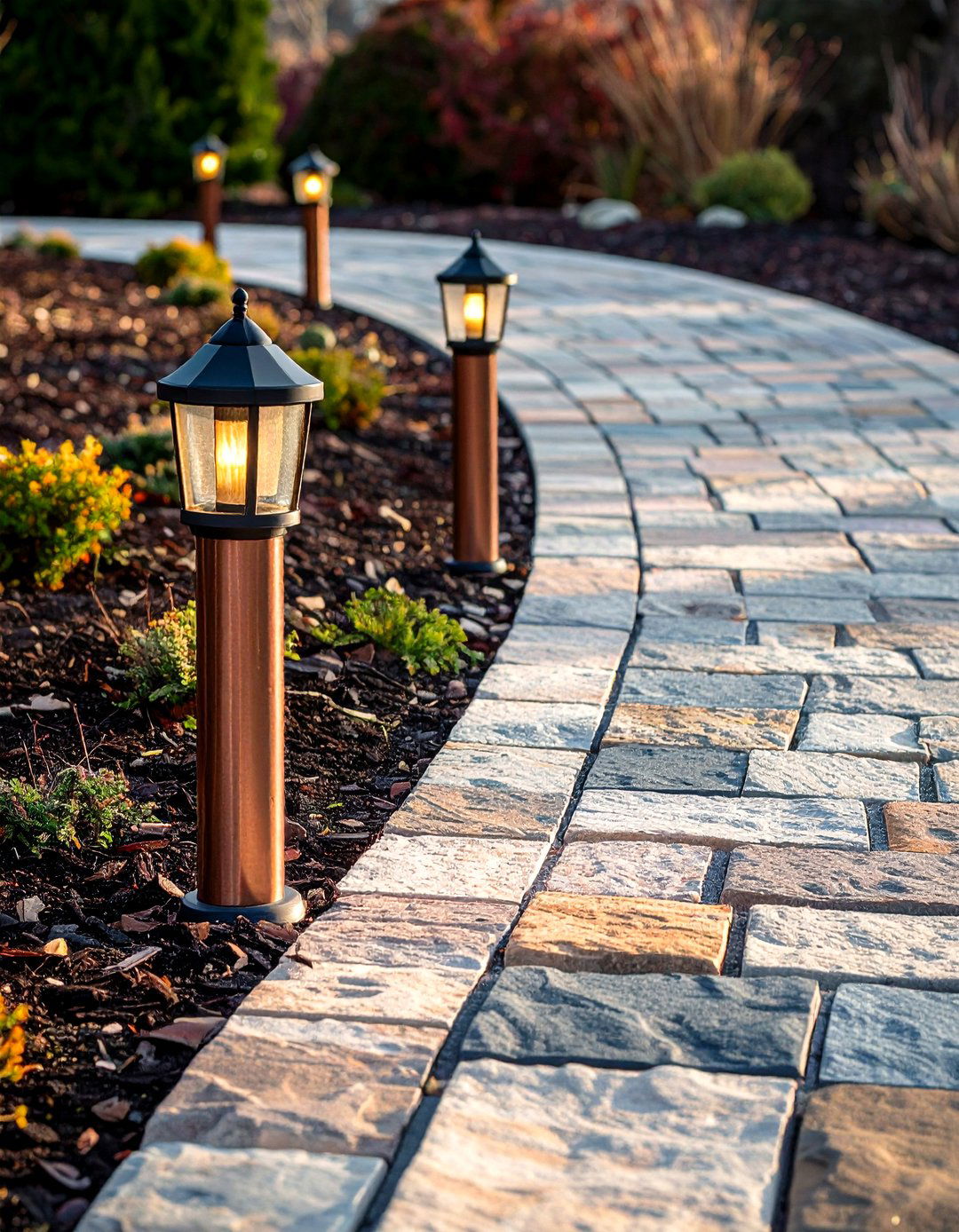
For instant patina, salvage granite cobbles aged by two hundred years of European foot traffic. Historic European Cobblestone supplies hand-tapered blocks whose weathered crowns and earth-toned grays read authentically antique. Laying these in a granite walkway infuses stories of distant ports and carriage routes without waiting decades for new stone to mellow. Because the pieces vary slightly in height, dry-set them in a thick sand bed you can fine-tune with a rubber mallet. Finish the gaps with decomposed granite to keep things permeable yet cohesive. Low copper bollard lights will graze the rounded tops at night, emphasizing their gentle undulations.
6. “Floating” Granite Steppers Across Lawn
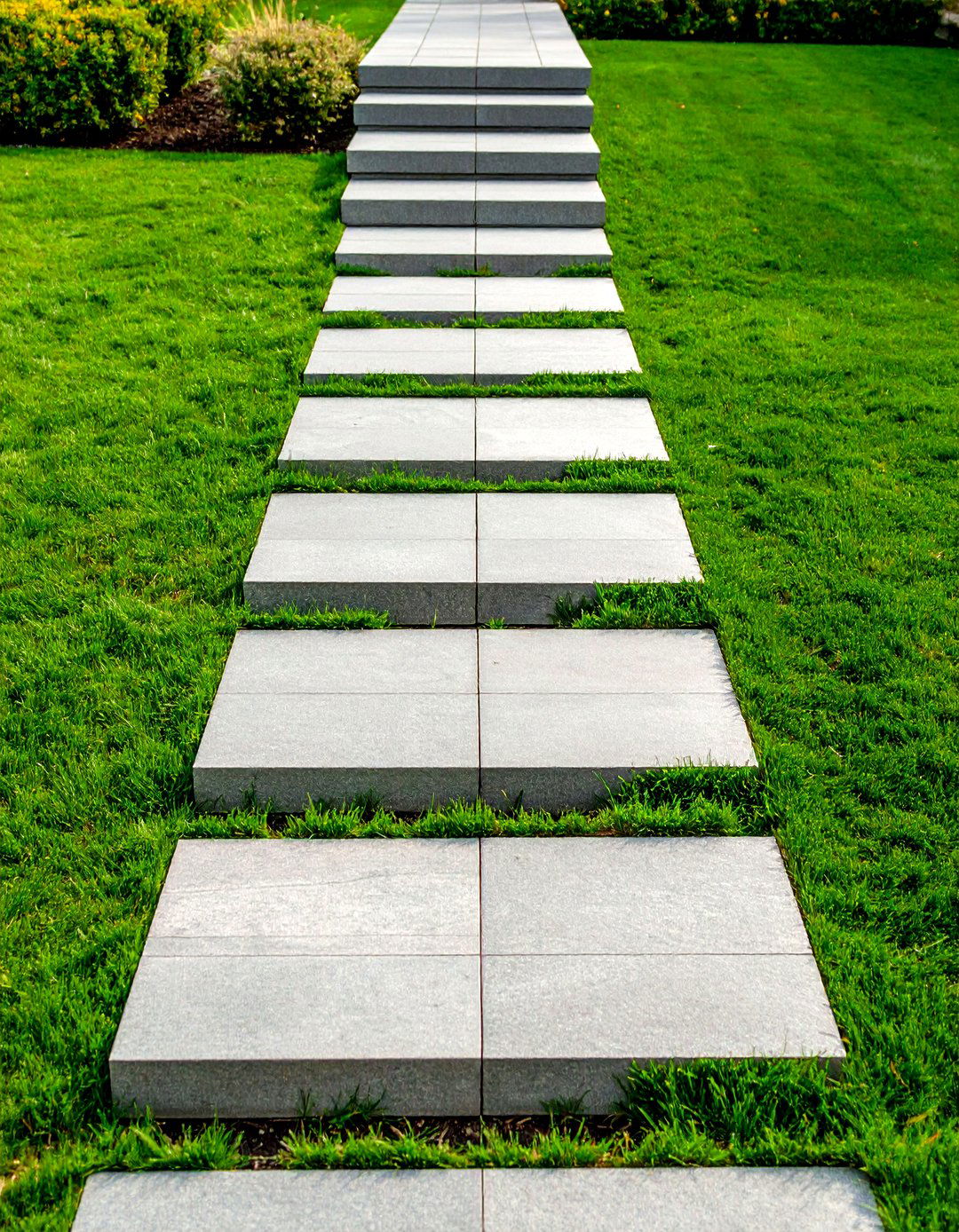
Unlike a continuous slab, a line of large rectangular granite pads separated by turf creates the illusion of stones floating on green water. Select saw-cut tops for crisp geometry and keep joints a mower-blade wide. StonesDirect’s gauged granite steps arrive uniform in thickness so each tread feels stable without deep excavation. This granite walkway doubles as an informal patio when you widen pad spacing near a seating area. Fertilize grass lightly; too much vigor leads to scalping edges on the mower’s first pass. When drought browns the lawn, the pale granite will still read tidy and intentional.
7. Herringbone Granite Paver Walkway
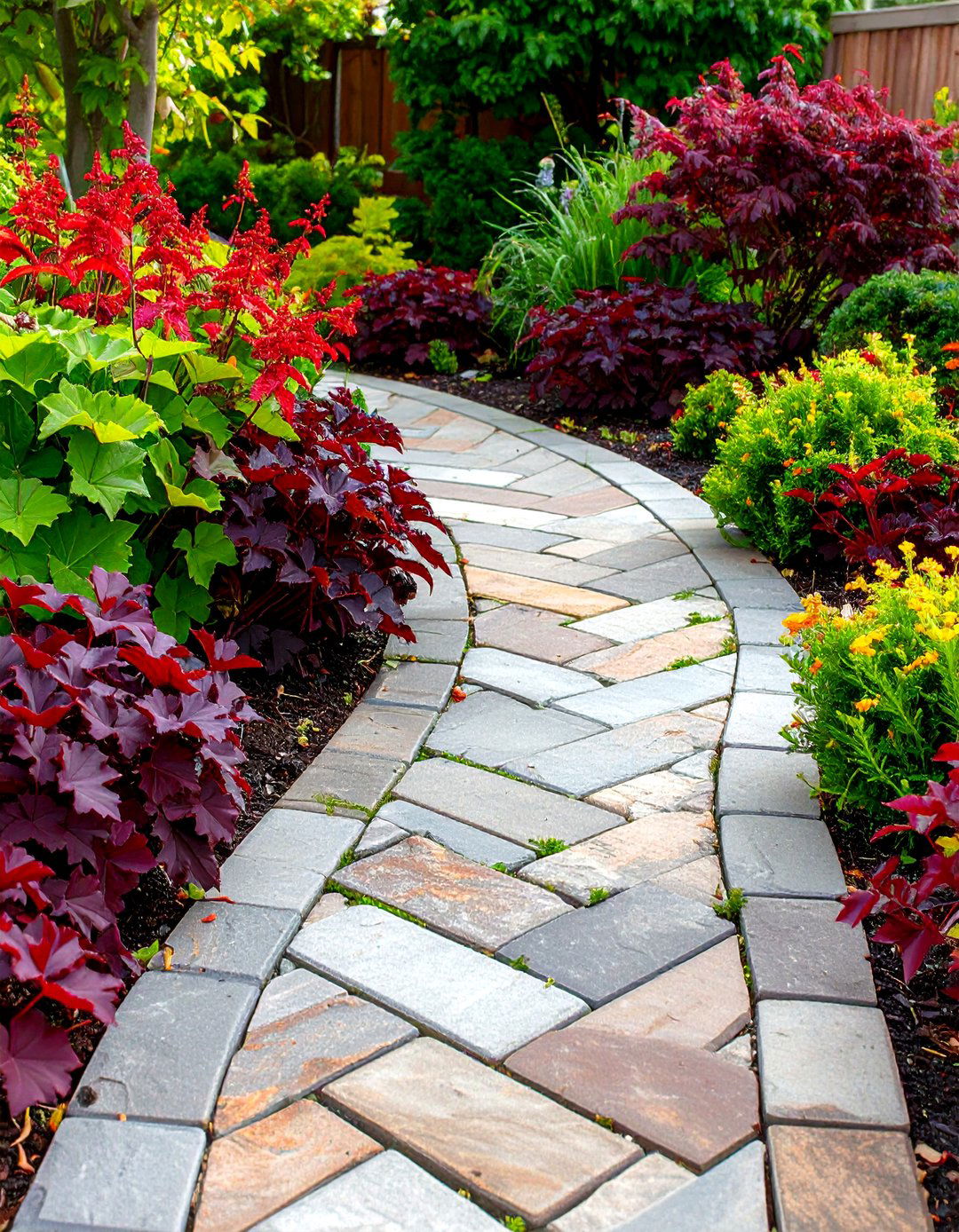
Pattern adds punch to monochrome stone, and the 45-degree herringbone is both stylish and structurally strong. Flamed-finish pavers improve traction and mask scuffs, making them family friendly. Snap chalk lines to keep modules aligned, then border the granite walkway with a soldier course of wider planks for polish. Because joints interlock, herringbone resists the shear forces of turning wheels—ideal where the path meets a driveway. Seal with a breathable product to ease spring cleanup; spills stay on the surface instead of soaking in. For a dash of color, plant burgundy heuchera in offset pockets along the edge, echoing the zigzag rhythm.
8. Pebble-Infilled Granite Slab Mosaic

Surprisingly, leaving deliberate gaps can heighten interest. Space sawn granite slabs two inches apart and fill voids with smooth river pebbles. Stone & Tile Shoppe notes that flamed granite tolerates wet areas and blends with almost any design theme. The tactile contrast between rough stone and polished pebbles makes every step engaging, while the pebbles act as mini French drains along the granite walkway. Stick to one pebble color for serenity or scatter mixed neutrals for a beachy vibe. Flush-mount path lights at random will glint off the pebbles after dark like water droplets.
9. Granite-Edged Walkway Upgrade
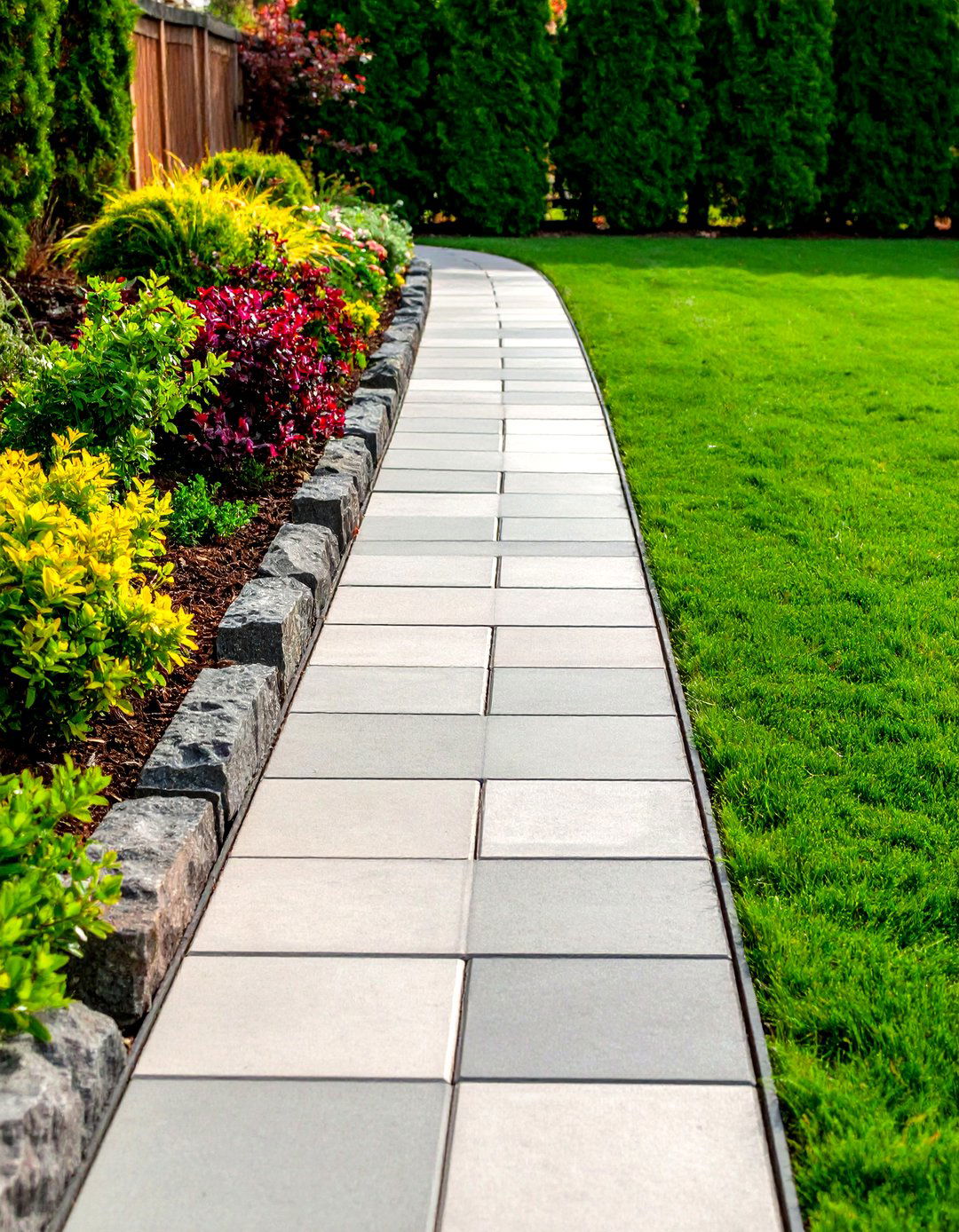
If you already have concrete or brick paving, flanking it with chunky granite edging instantly upgrades strength and style. Swenson Granite points out that split-face granite curbs double as root barriers and survive freeze-thaw cycles with ease. Lowe’s DIY guide shows how a shallow trench and leveling sand make installation weekend-friendly. Choose three-by-seven-inch “garden edging” for most paths; heavier four-by-twelve pieces lend driveway toughness. The crisp border keeps mulch in place, protects lawn edges from string trimmers, and frames the existing granite walkway so it reads intentional rather than incidental.
10. Timber-and-Granite Boardwalk Mash-Up
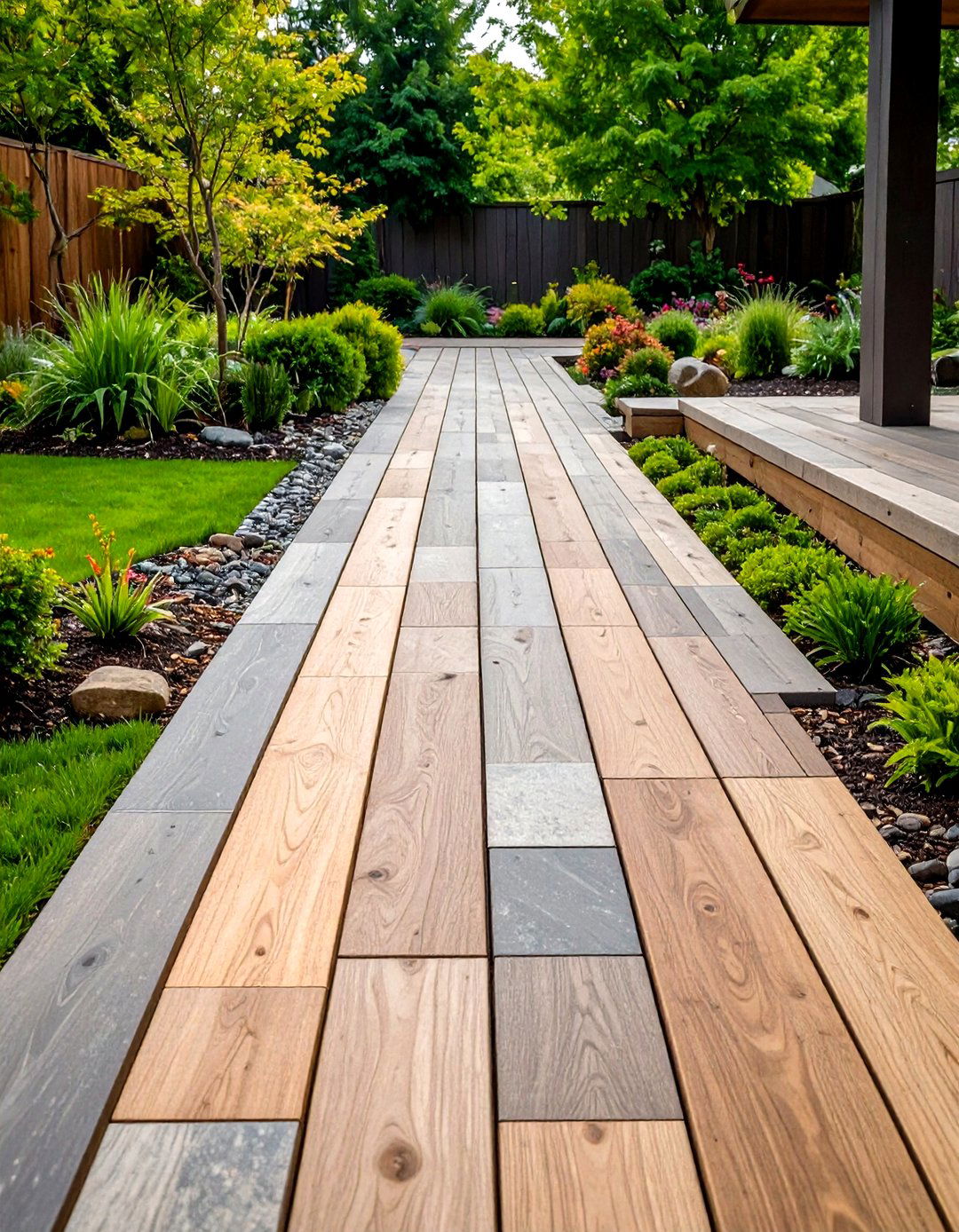
Although stone and wood seem opposites, alternating six-foot granite planks with pressure-treated timber beams yields a rhythm that references Japanese engawa porches. Houzz galleries show many decomposed-granite paths incorporating timber accents for warmth. Sink galvanized fasteners through the wood into concrete pads, leaving the granite segments floating on compacted gravel so each material moves independently. Annual wood oiling and granite sealing occur on the same schedule, simplifying maintenance. This hybrid granite walkway works especially well where home siding or pergolas already feature timber, tying outdoor and architectural elements together.
11. Granite Gravel Walkway with Superior Drainage

Granite gravel—angular, interlocking chips—forms a fast-draining surface that crunches delightfully underfoot. HelloGravel highlights its permeability and range of natural hues, from charcoal to russet. Spread three inches over landscape fabric for weed control, then confine the edges with steel or granite curbing so the path stays neat. Routine raking levels displaced stones, and a top-up every few years refreshes color. Because a gravel granite walkway flexes, it’s perfect over tree-root zones where rigid paving would heave or crack. Accent the path with low, drought-proof lavender—its silvery leaves complement the speckled aggregate beautifully.
12. Tiered Granite-Step Walkway on a Slope
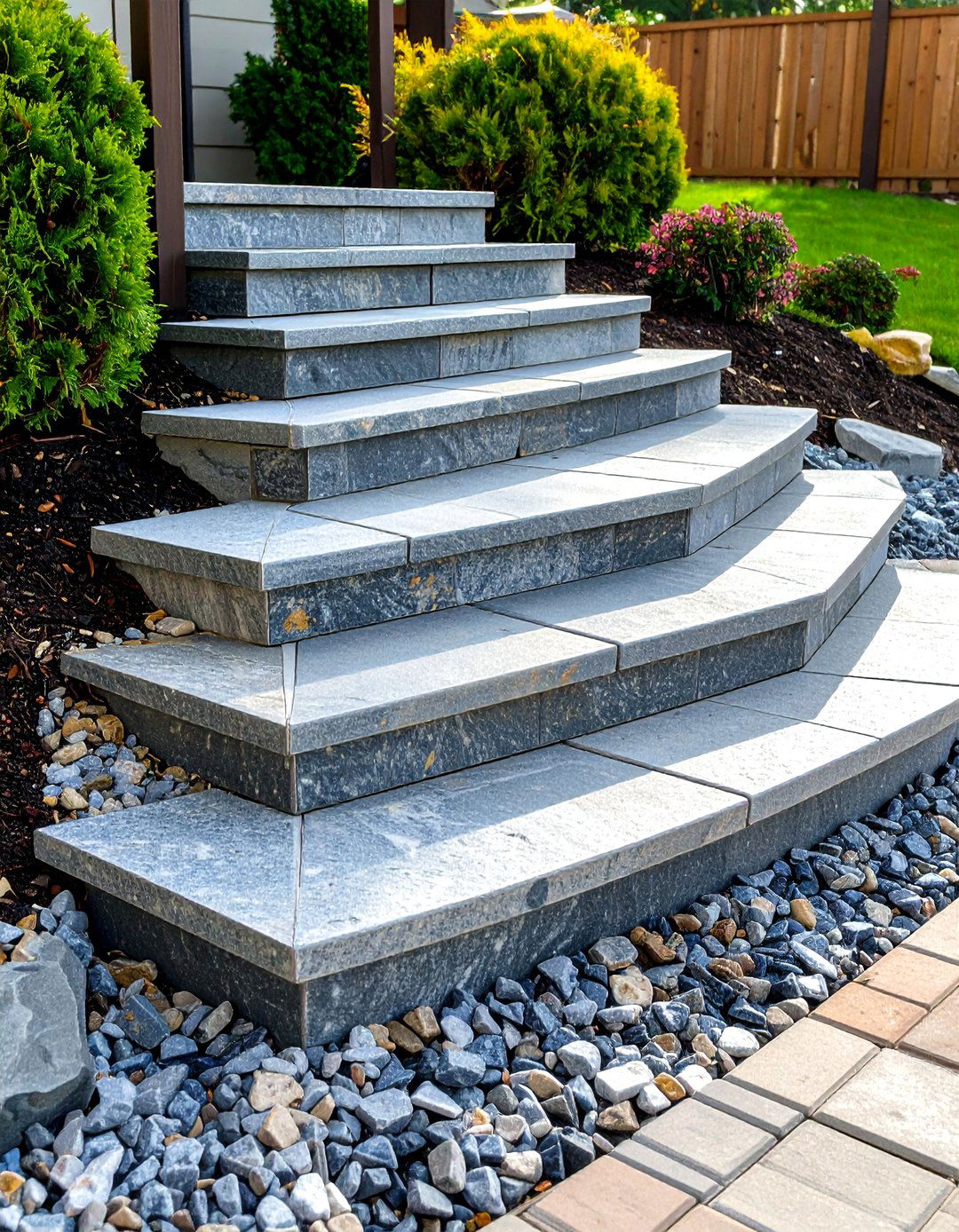
Climbing a grade safely means matching riser height to tread depth. Stone Center recommends 6- to 7-inch-thick granite slabs with 12- to 18-inch treads for outdoor steps, offering both stability and slip resistance. Cut the hillside into staggered terraces, backfill with compacted gravel, then set each block level. Where frost is brutal, use a geotextile behind risers to prevent soil washout. Cap the granite walkway with crushed granite screenings to absorb runoff between steps and the hillside. LED strip lights recessed into adjacent retaining walls will wash the treads, creating a dramatic—and safe—night-time ascent.
13. Light-Integrated Granite Walkway
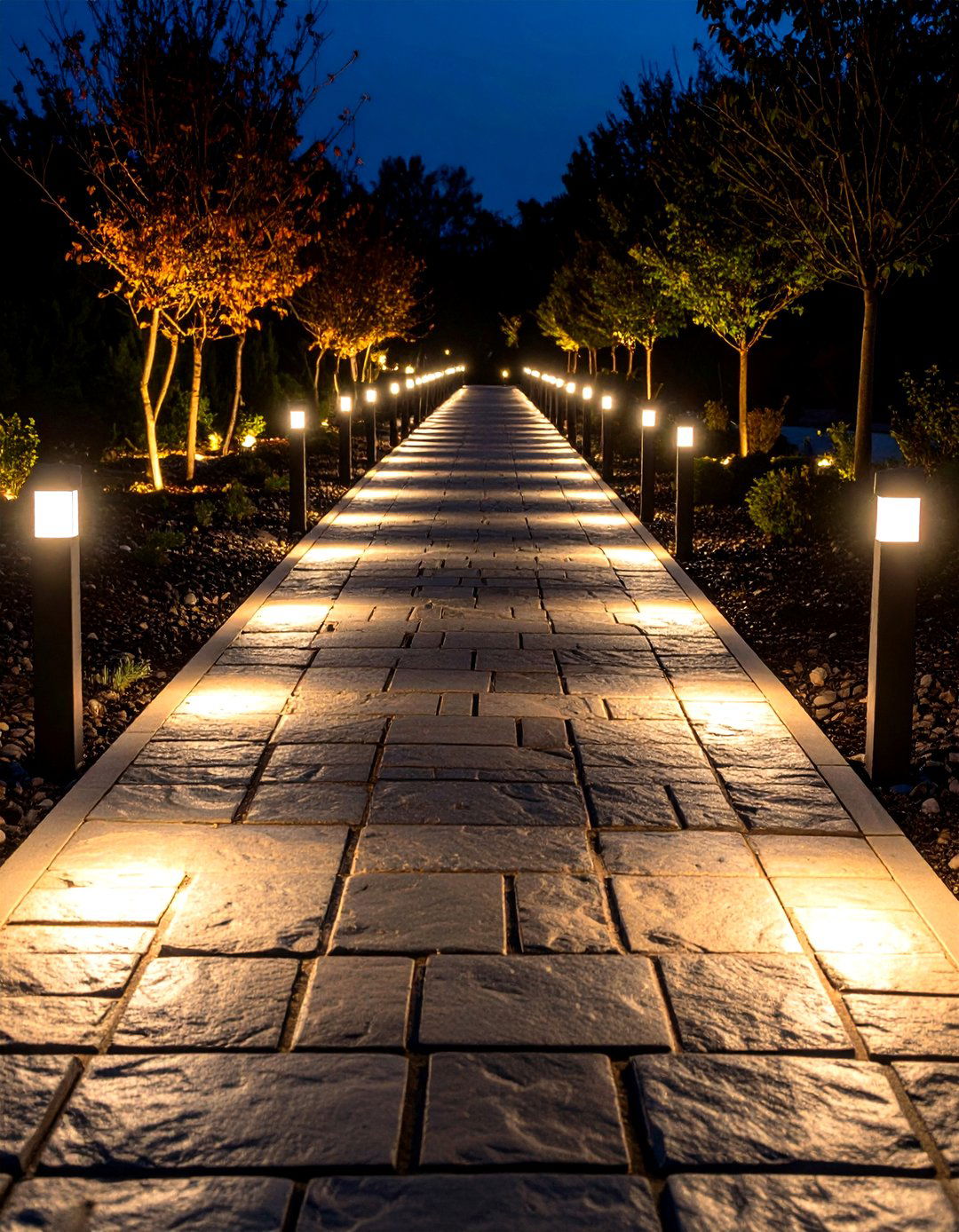
Granite’s mass makes a perfect anchor for low-voltage lighting. Core-drill pockets near the path edge and drop in IP67-rated puck fixtures; the stone dissipates heat and hides wiring in mortared channels. Flamed surfaces further reduce glare at night by scattering reflections. Set warm white LEDs to 2700 K so foliage colors remain true. Because the fixtures sit flush, snow shovels glide across without snagging. A light-woven granite walkway feels safe without pole lights cluttering sightlines, letting planting beds and architecture steal the spotlight.
14. Poolside Flamed Granite Walkway

Around water, traction is paramount. Duramica notes that flamed granite’s rough, vitrified texture excels in wet areas such as pool decks and outdoor walkways. Choose pale gray or buff tones that stay cool under bare feet, and machine a subtle full-bullnose on exposed edges to reduce chipping. Extend the granite walkway two feet beyond lounge chairs so splashes land on stone, not slippery turf. Periodic pressure-washing followed by resealing keeps sunscreen oils from staining, while a perimeter channel drain tucked beneath the coping whisks away stormwater.
15. Narrow Herb-Spiral Granite Walkway

Surprisingly, even a two-foot-wide granite walkway can wind upward through a herb spiral, offering harvest access without compacting soil. Decomposed granite stays permeable, so rosemary roots near the path never sit waterlogged. Edge the ribbon with 4-inch granite cobbles mortared vertically; their thermal tops resist shears when you clip herbs that tumble across. Because the path ascends gently, stagger half-moon granite slabs every few feet to act as mini steps, preventing erosion on the spiral’s outer rim.
16. Grand Promenade Granite Walkway to the Front Door
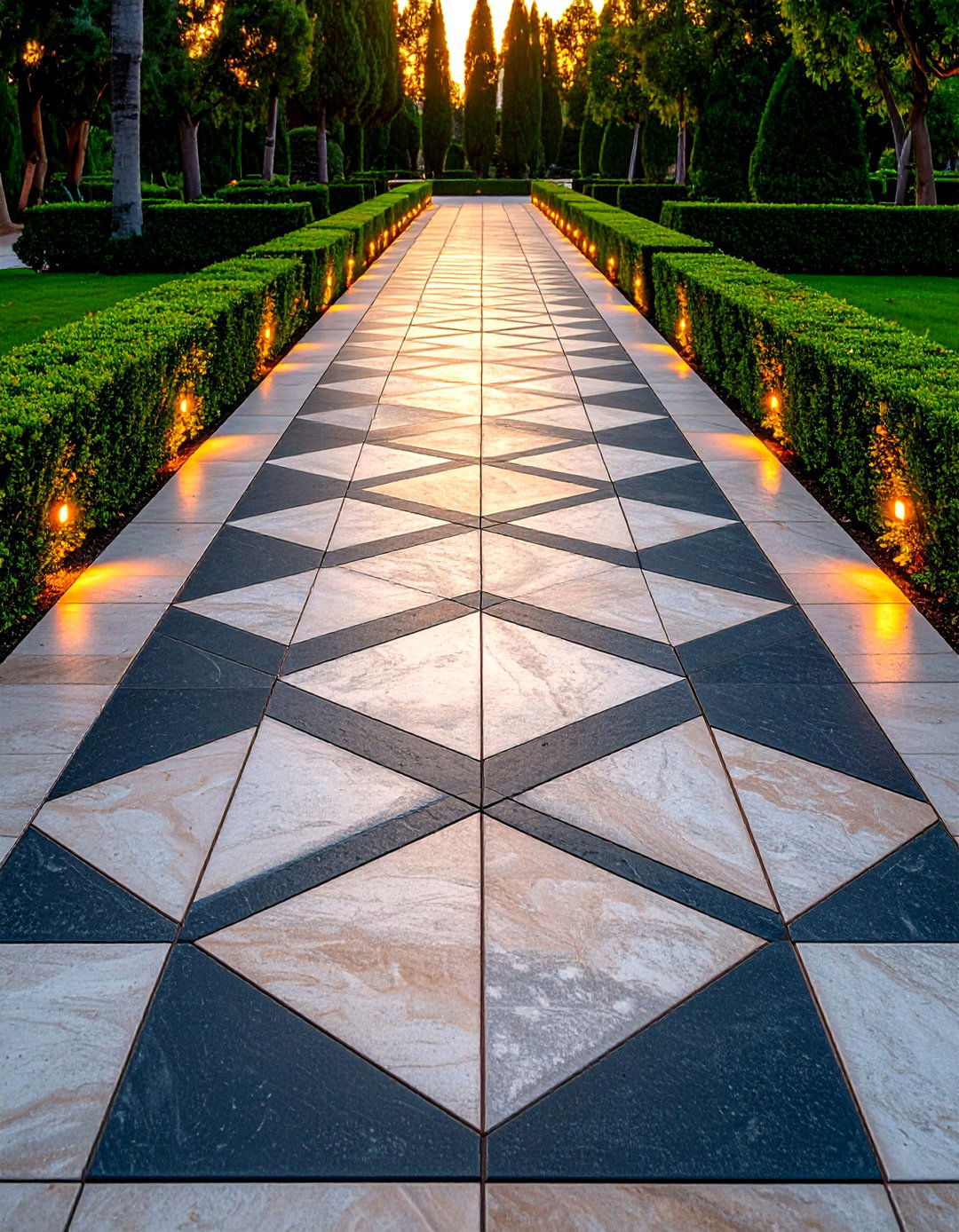
A residence with broad architecture demands an equally bold approach. Lay 24-inch flamed granite squares in a grid, breaking the monotony with an occasional darker rectangle set perpendicular. The generous scale complements large façades and guides guests unhurriedly to the threshold. Swenson Granite’s heavy-duty edging pieces can retain the surrounding lawn, ensuring the promenade edges stay razor-straight. Flank the granite walkway with low boxwood hedges trimmed flush with stone height for a carpet-like transition.
17. Granite Medallion Inlay as Focal Point

Center your path on a circular granite medallion crafted from contrasting colors—salt-and-pepper petals radiating from a jet-black hub. Belgian-block borders define the circle while smaller setts infill the design. Wikipedia’s overview of setts underscores their regular shape, which makes intricate patterns easier to achieve than with rounded cobbles. Position the medallion where two granite walkways intersect so it feels intentional, not decorative clutter. Uplight a specimen tree beyond the circle to draw eyes deeper into the garden.
18. Metal-Edged Stabilized DG Granite Walkway
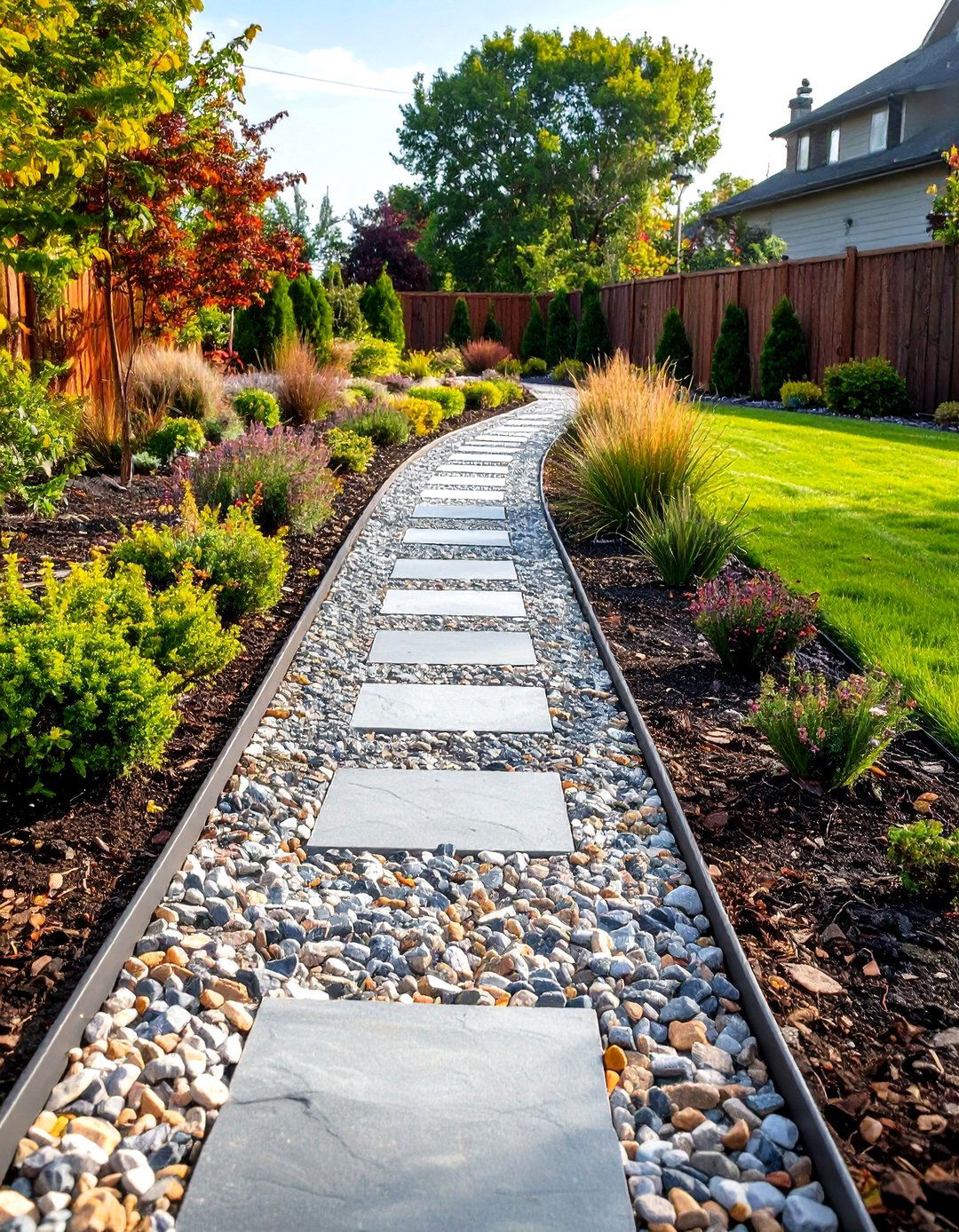
When budgets are tight yet mud is a menace, The Spruce lists compacted decomposed-granite paths as one of the cheapest, easiest DIY solutions. Add a liquid stabilizer during installation, then lock the border with weathering-steel edging to keep aggregate in place on slopes. The warm rust line whispers industrial chic, contrasting the tawny granite walkway surface. Top-dress annually with a thin DG layer to erase scuffs; the binder reactivates with a fine mist of water, self-healing hairline cracks.
19. Granite Bridge Walkway Over a Water Feature

Spanning a rill or koi pond doesn’t require a timber drawbridge. Float three massive flamed granite planks on concealed steel beams, each planed to a gentle arch. Because granite resists constant splashing and winter ice, upkeep is minimal. Position low-angle lights beneath the bridge lip so water reflections dance across the stone at night, emphasizing the granite walkway’s subtle curve. Plant iris and pickerelweed along banks; their vertical lines echo the bridge supports.
20. Low-Maintenance Wax-Polymer Granite Trail
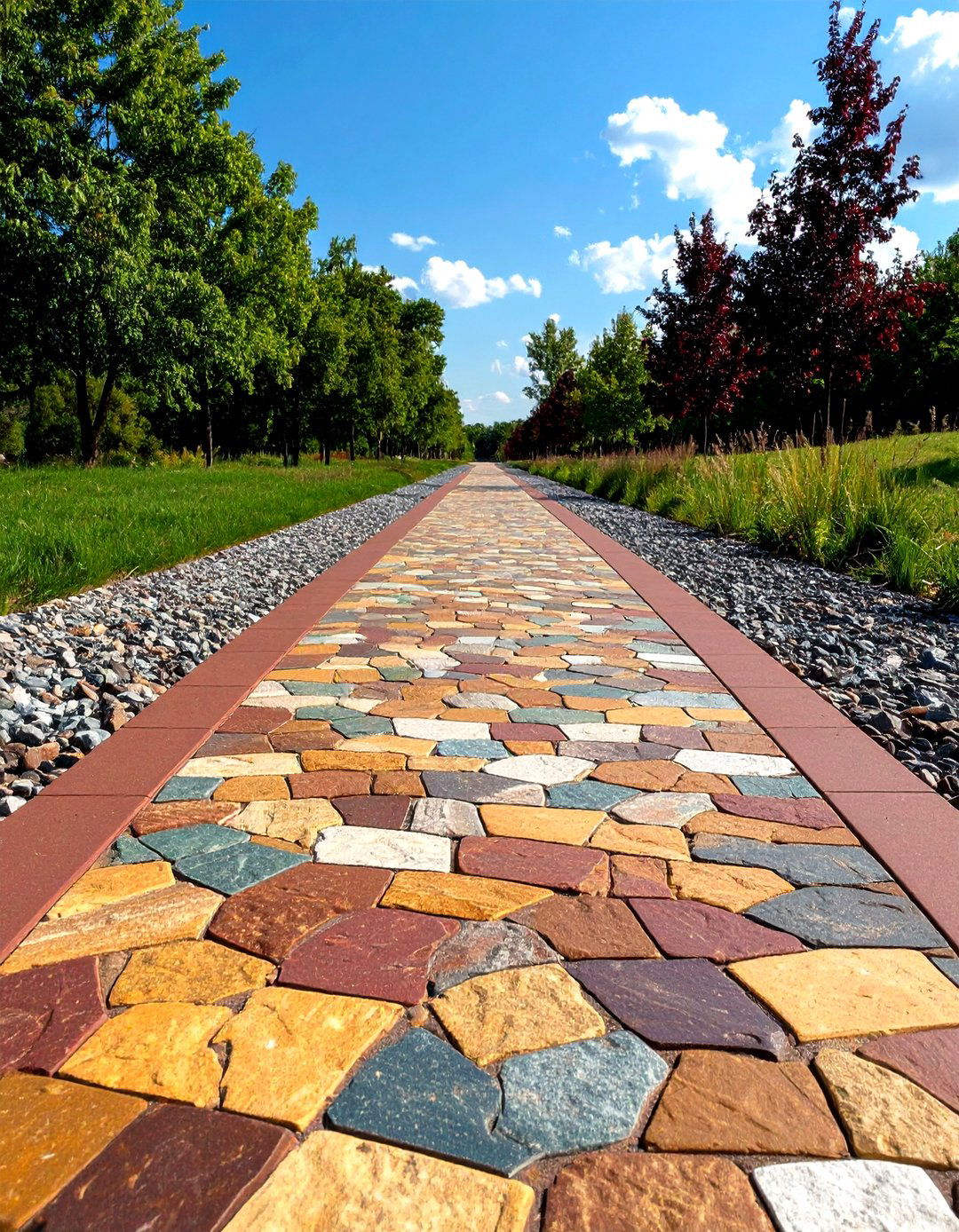
Where rains or golf carts punish ordinary paths, Kafka Granite’s wax-polymer mixes bind crushed granite into a water-shedding, dust-free surface built for heavy wear. Lay it 2.5 inches thick over compacted road base, and you’ll gain a granite walkway that never puddles yet feels firm enough for wheelchairs. Because the polymer seals pores, weeds struggle to germinate, trimming maintenance to occasional blowing. A light broom coat of fresh aggregate every few years renews texture without full resurfacing, making this option ideal for parks, resorts, or sprawling estate loops.
Conclusion:
Whether you favor the rugged crunch of decomposed granite, the stately precision of laser-cut pavers, or the storied patina of antique cobbles, granite walkways adapt to site quirks, climate challenges, and stylistic ambition with equal grace. Their slip-resistant textures, permeability options, and near-bulletproof durability mean less time fixing paths and more time enjoying the journey they frame. By mixing finishes, edging, and layout tricks from the ideas above, you can craft a granite walkway that feels tailor-made—because it is.


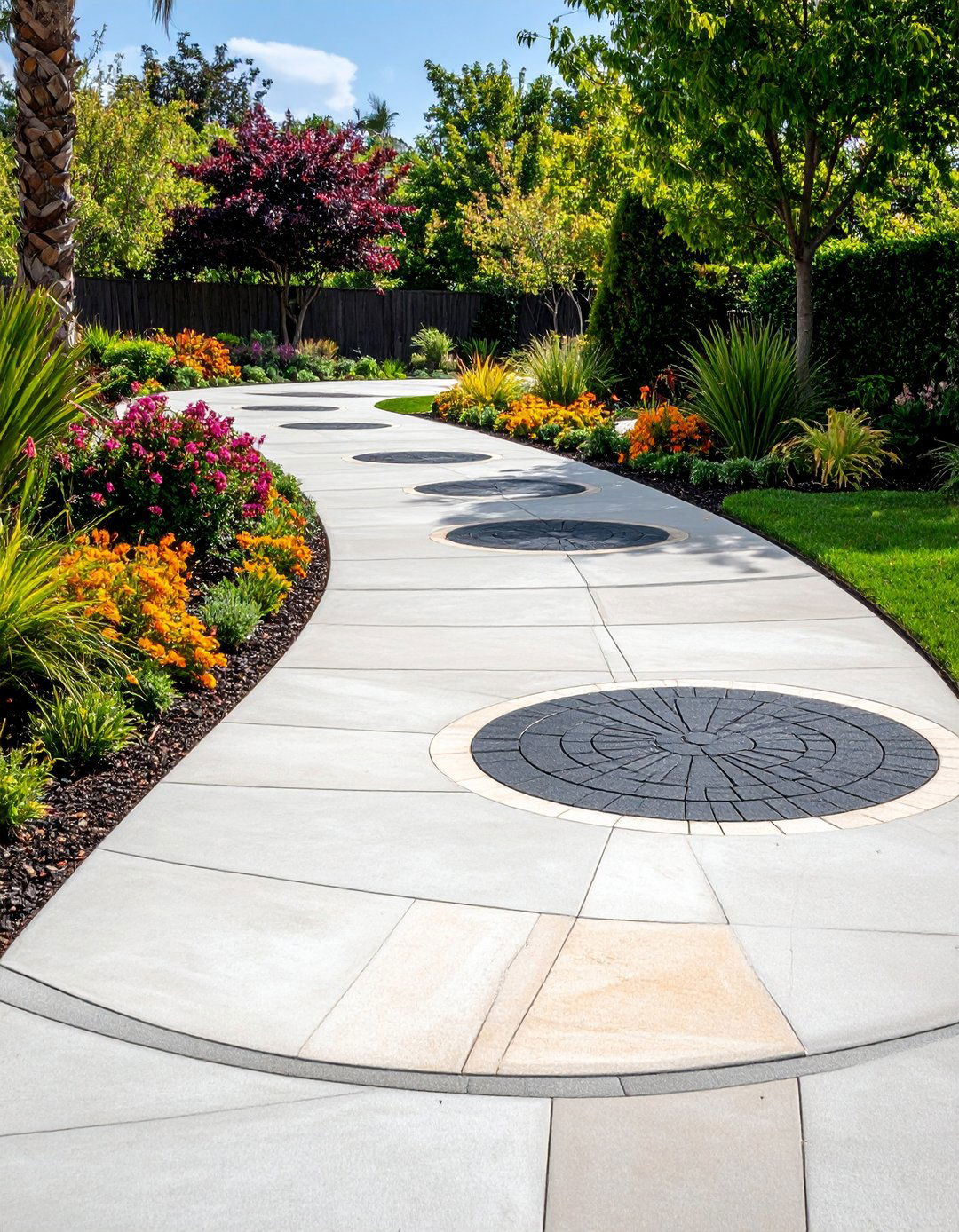
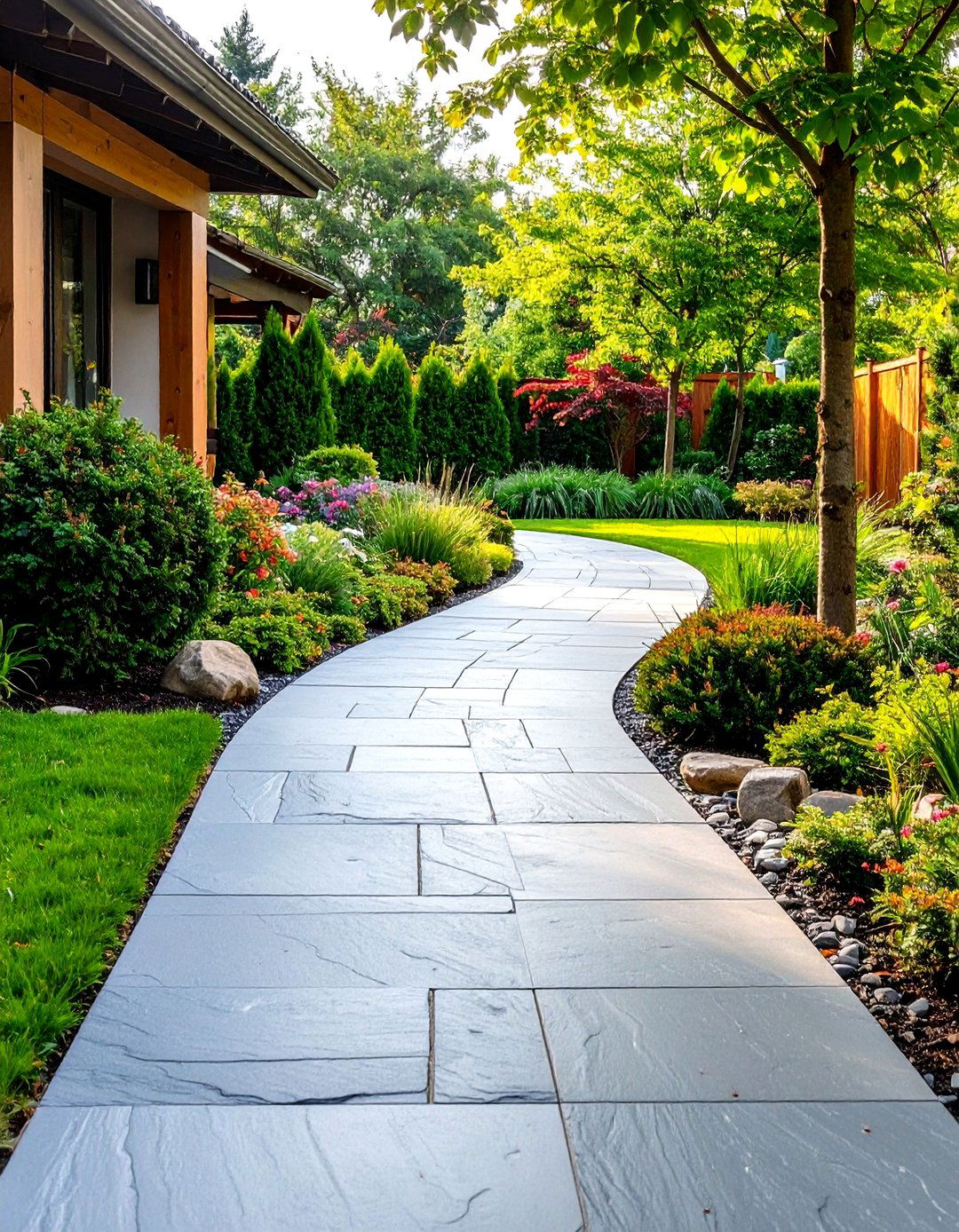
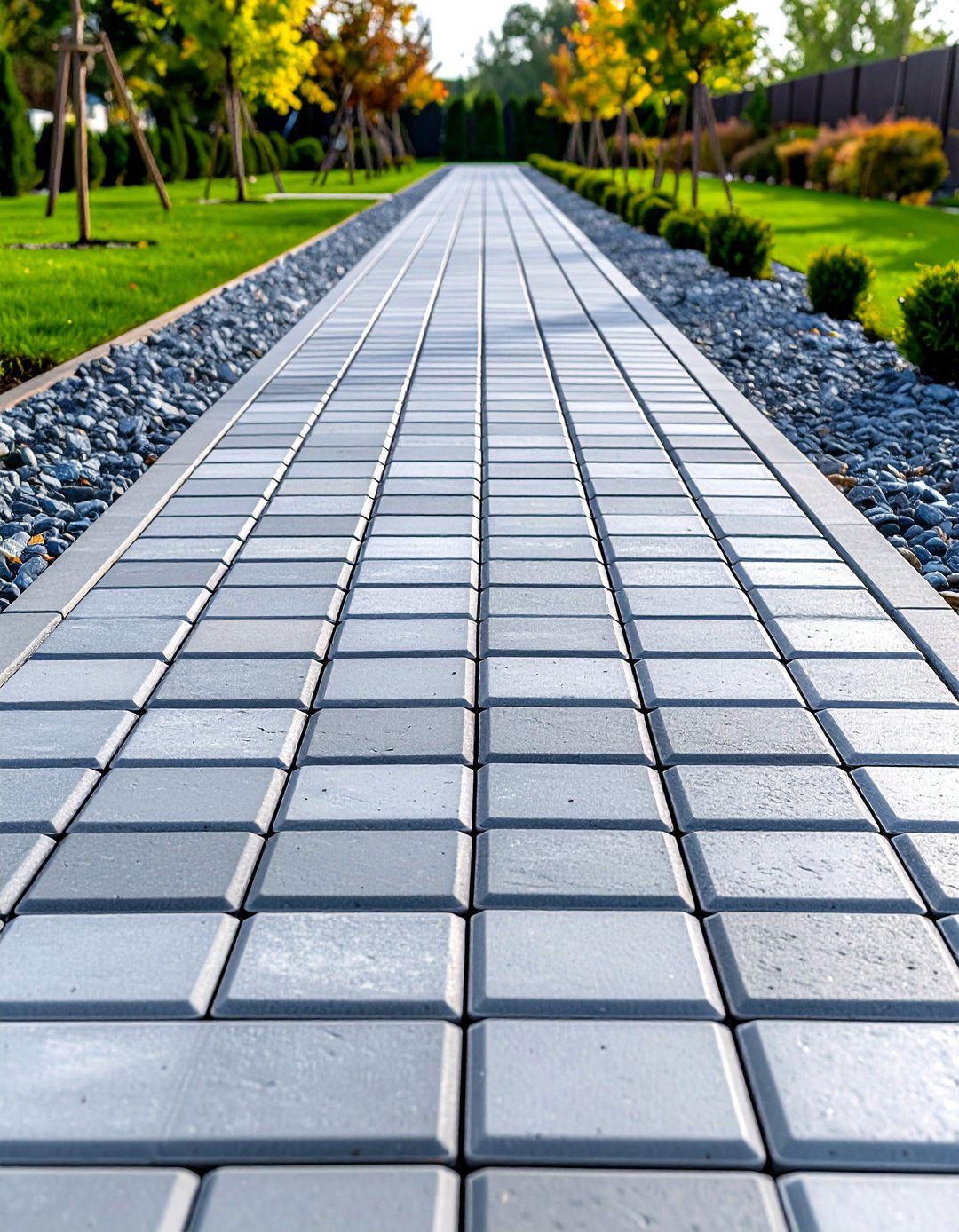



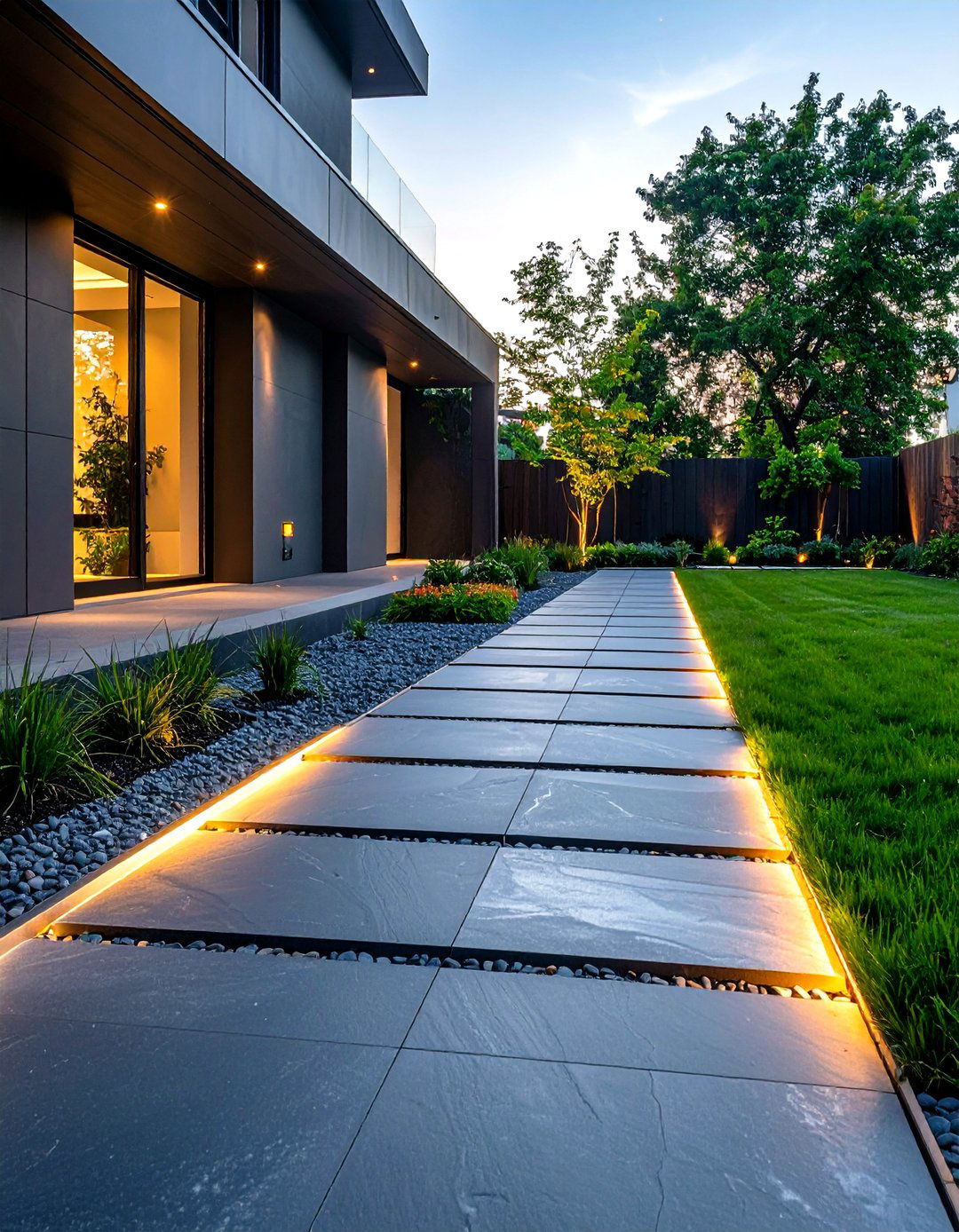
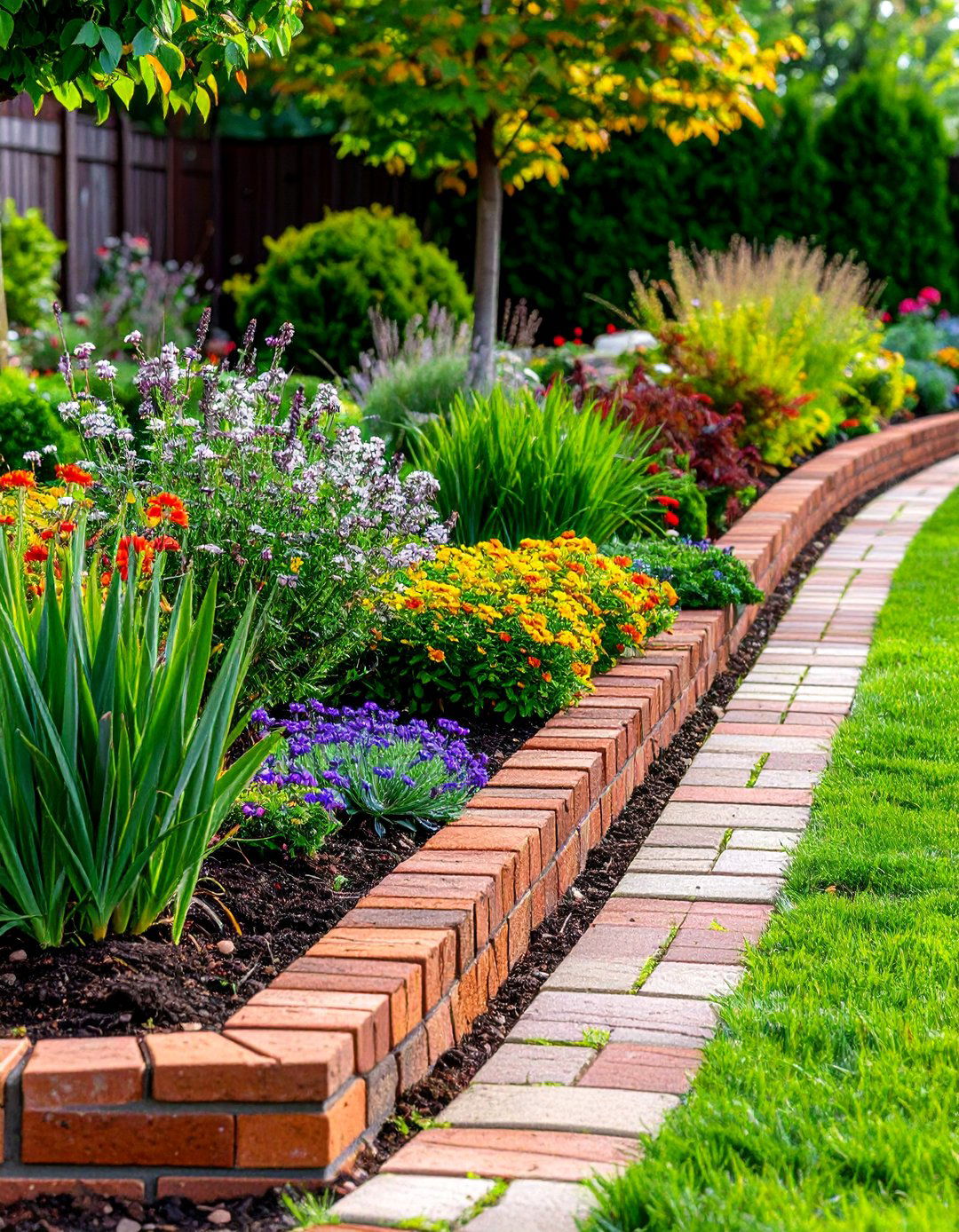
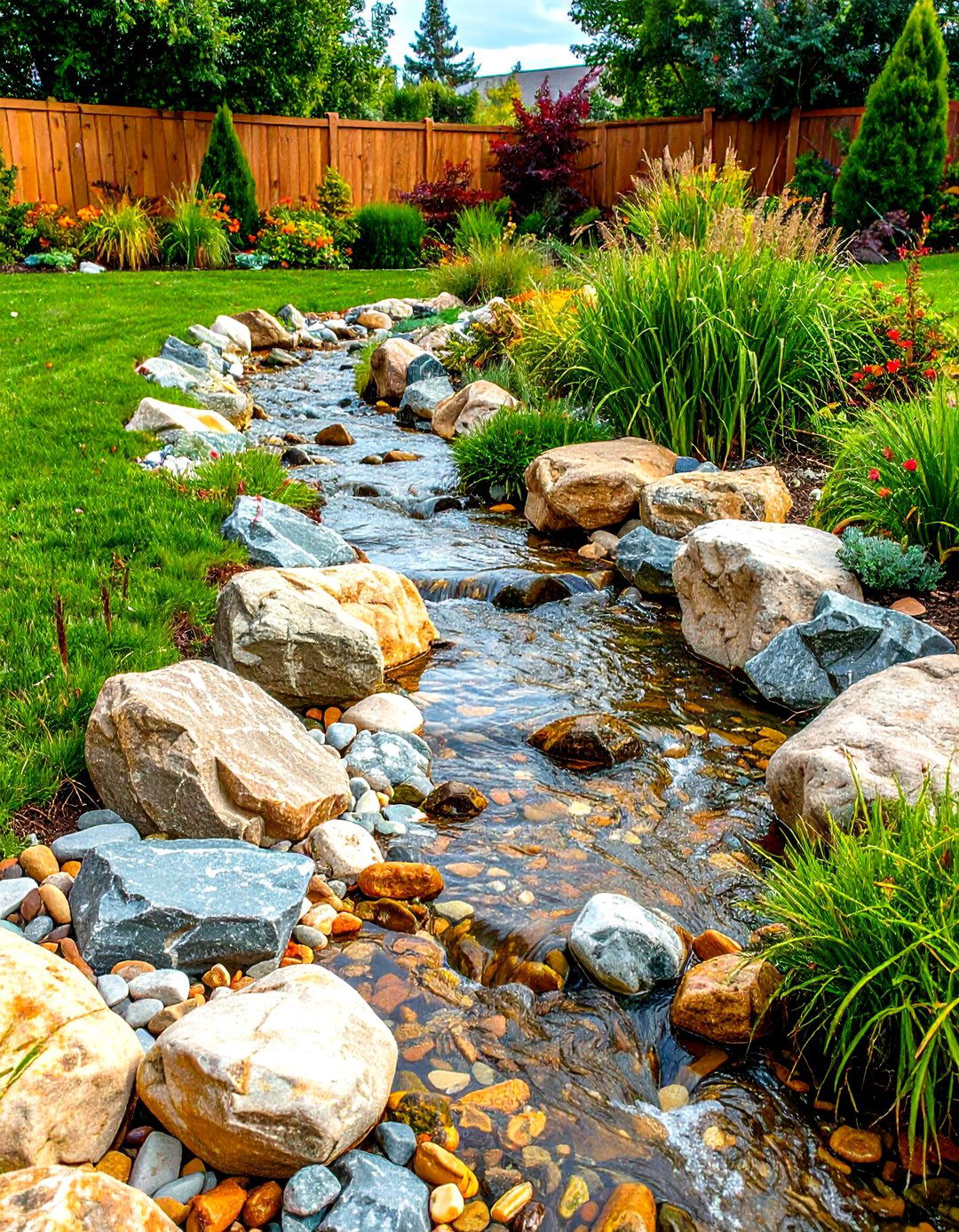


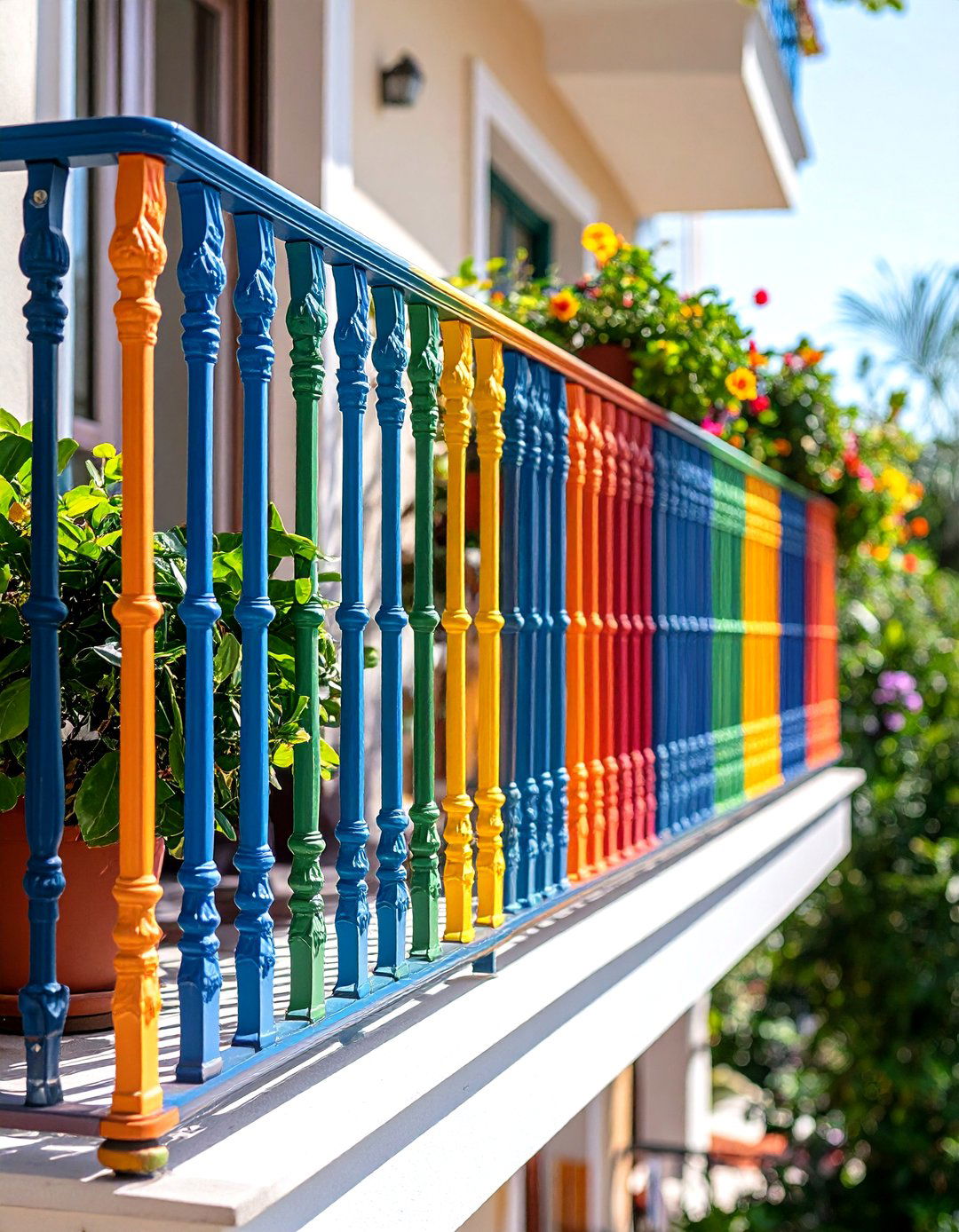
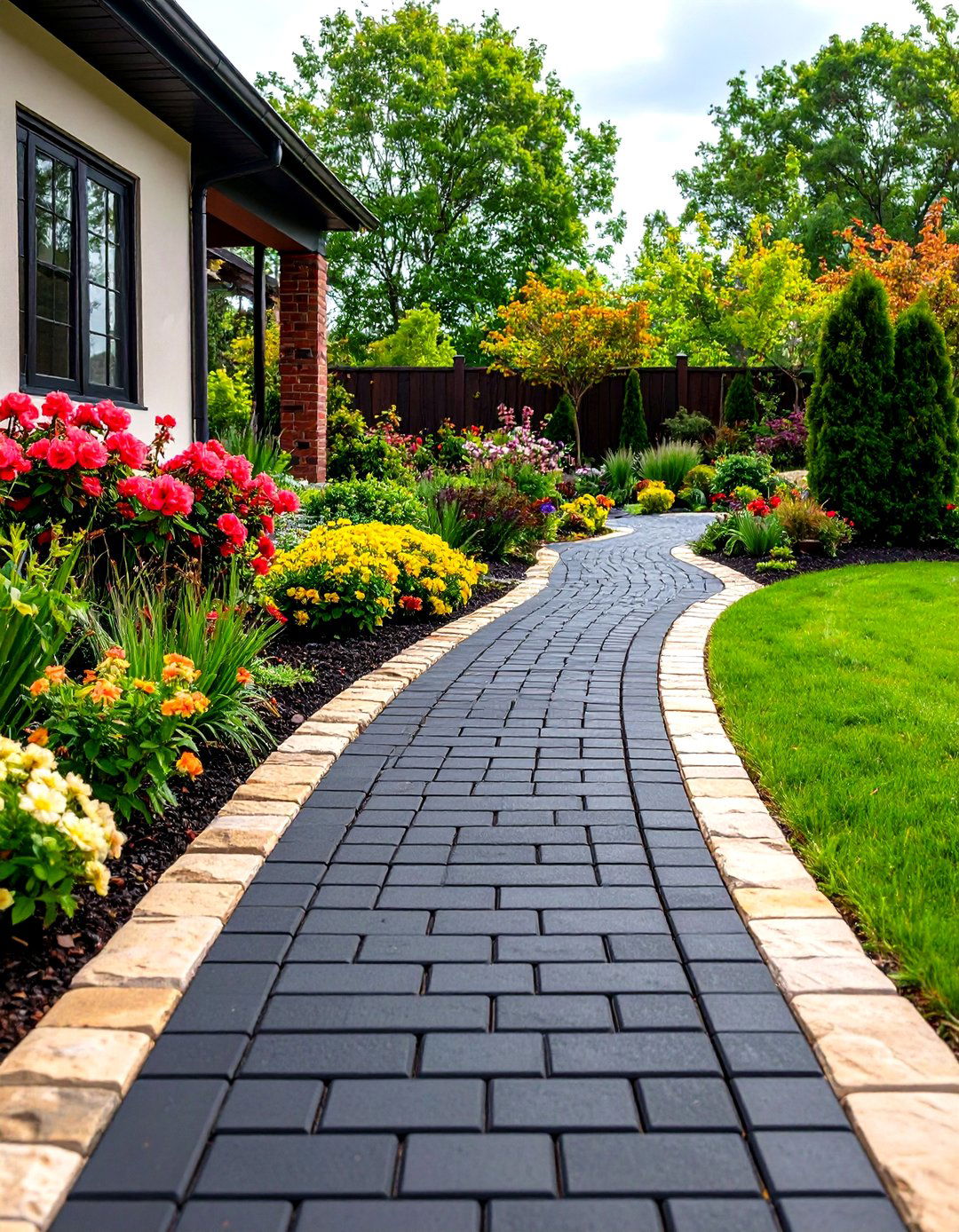
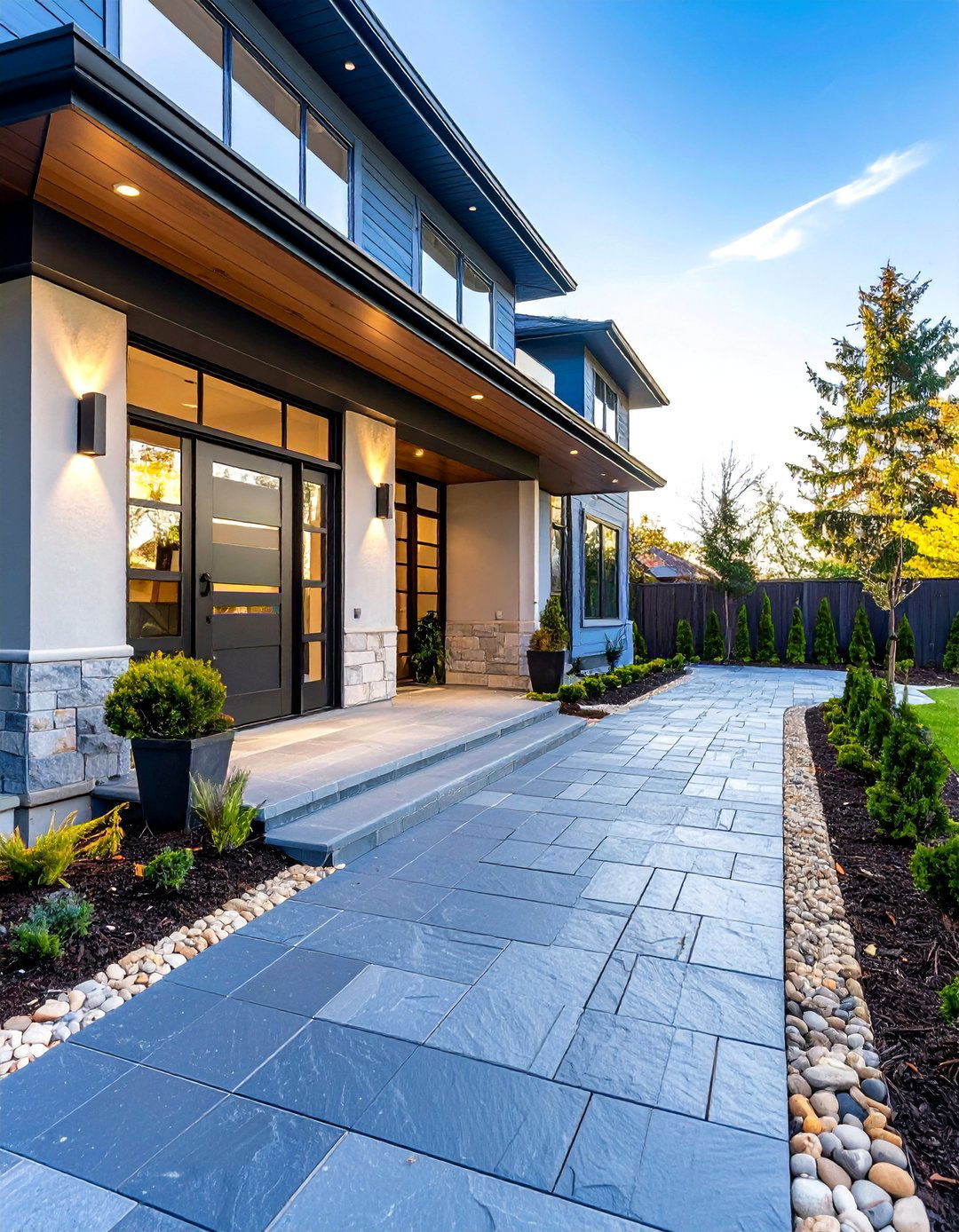
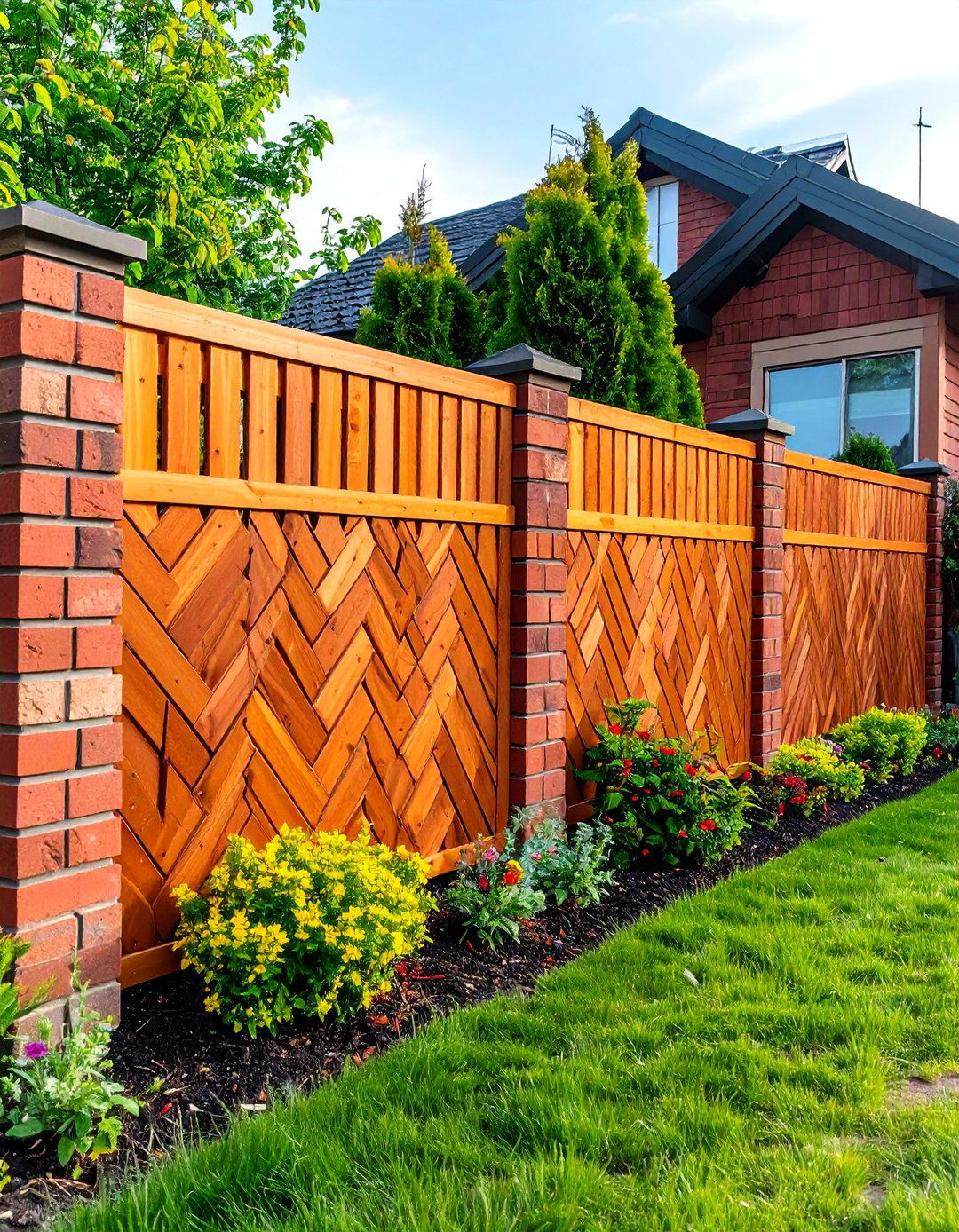
Leave a Reply